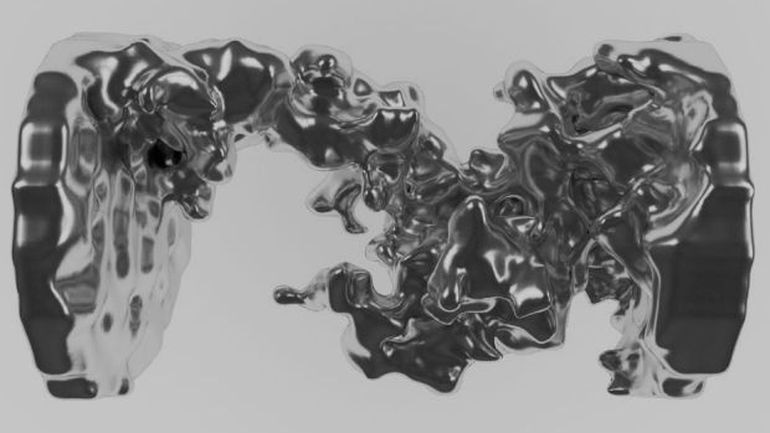Sep 13 2016
 NYU chemists and their colleagues have developed a method to yield highly detailed, three-dimensional images of the insides of batteries. Shown here is a 3D image of the inside of a lithium cell after charging and showing dendrite growth--deposits than can reduce performance and compromise safety--between the two electrodes that short-circuited the cell. Image courtesy of NYU’s Jerschow lab.
NYU chemists and their colleagues have developed a method to yield highly detailed, three-dimensional images of the insides of batteries. Shown here is a 3D image of the inside of a lithium cell after charging and showing dendrite growth--deposits than can reduce performance and compromise safety--between the two electrodes that short-circuited the cell. Image courtesy of NYU’s Jerschow lab.
A team of chemists have developed a technique to yield highly comprehensive, 3D images of the inner sides of batteries. The method is based on magnetic resonance imaging (MRI), and provides an improved approach to observe the condition of these power sources in real time.
One particular challenge we wanted to solve was to make the measurements 3D and sufficiently fast, so that they could be done during the battery-charging cycle. This was made possible by using intrinsic amplification processes, which allow one to measure small features within the cell to diagnose common battery failure mechanisms. We believe these methods could become important techniques for the development of better batteries.
Alexej Jerschow, Chemistry Professor, NYU
The research, outlined in Proceedings of the National Academy of Sciences, focuses on rechargeable Lithium-ion (Li-ion) batteries. Li-ion batteries are used in cell phones, laptops, electric cars, and several other electronics. Lithium metal is viewed by many as a promising, highly capable electrode material, which could optimize performance and decrease battery weight.
However, when the battery is being recharged, it accumulates deposits - or “dendrites”- that can cause a loss in performance and safety issues, including explosions and fires. Monitoring the increase of dendrites is essential for producing high-performance batteries using lithium.
Other techniques developed by the same team used MRI technology to observe lithium dendrites directly, but they resulted in limited resolution and lower sensitivity, making it hard to view the dendrites in 3D and to know the conditions precisely under which they build up.
Taking that into consideration, the team decided to improve this process by focusing on the electrolytes surrounding the lithium. Electrolytes are substances used to transport charges between the electrodes. They discovered that MRI images of the electrolyte were strongly distorted in the surrounding area of the dendrites, providing a highly sensitive measure of where and when they form.
By visually capturing these distortions, the team could develop a 3D image of the dendrites from rapid MRI experiments. Alternative techniques are typically not successful on charging cells and require the batteries to be opened up, damaging the structure of the dendrite and changing the cell’s chemistry.
The method examines the space and materials around dendrites, rather than the dendrites themselves. As a result, the method is more universal. Moreover, we can examine structures formed by other metals, such as, for example, sodium or magnesium--materials that are currently considered as alternatives to lithium. The 3D images give us particular insights into the morphology and extent of the dendrites that can grow under different battery operating conditions.
Andrew Ilott, Postdoctoral Fellow, NYU
The other authors of the research included: Mohaddese Mohammadi, an NYU graduate student; Hee Jung Chang, a doctoral student at Stony Brook University at the time of the research and now a research associate at Pacific Northwest National Laboratory; and Clare Grey, a professor in the Department of Chemistry at the University of Cambridge.
The research was supported by the National Science Foundation, the U.S. Department of Energy’s Office of Science, Basic Energy Sciences and its Office of FreedomCAR and Vehicle Technologies, and the NorthEast Center for Chemical Energy Storage.